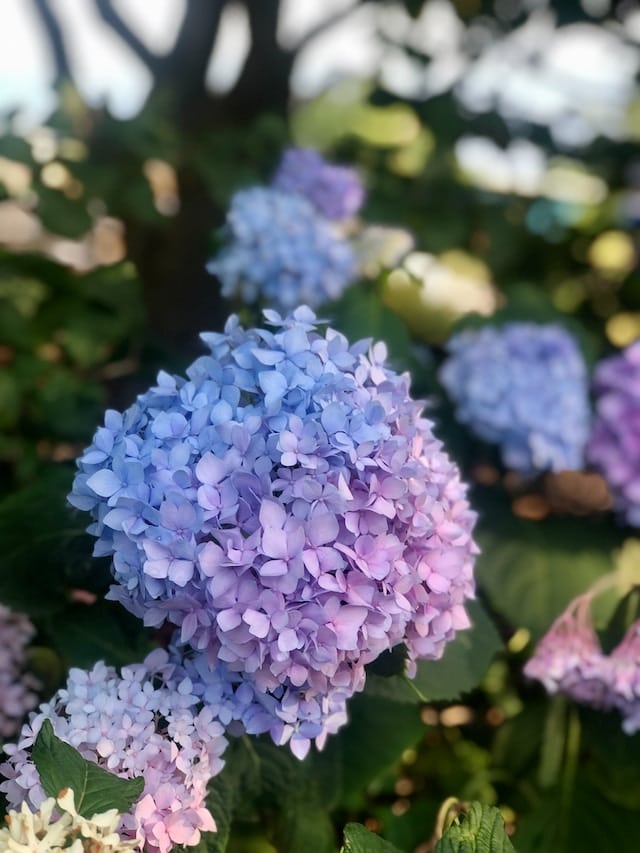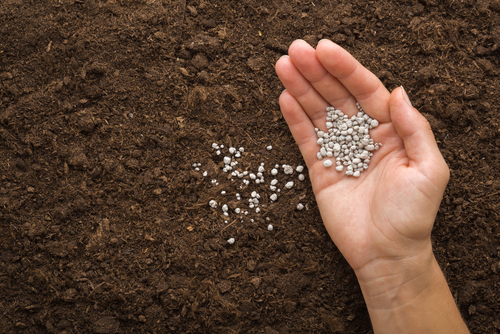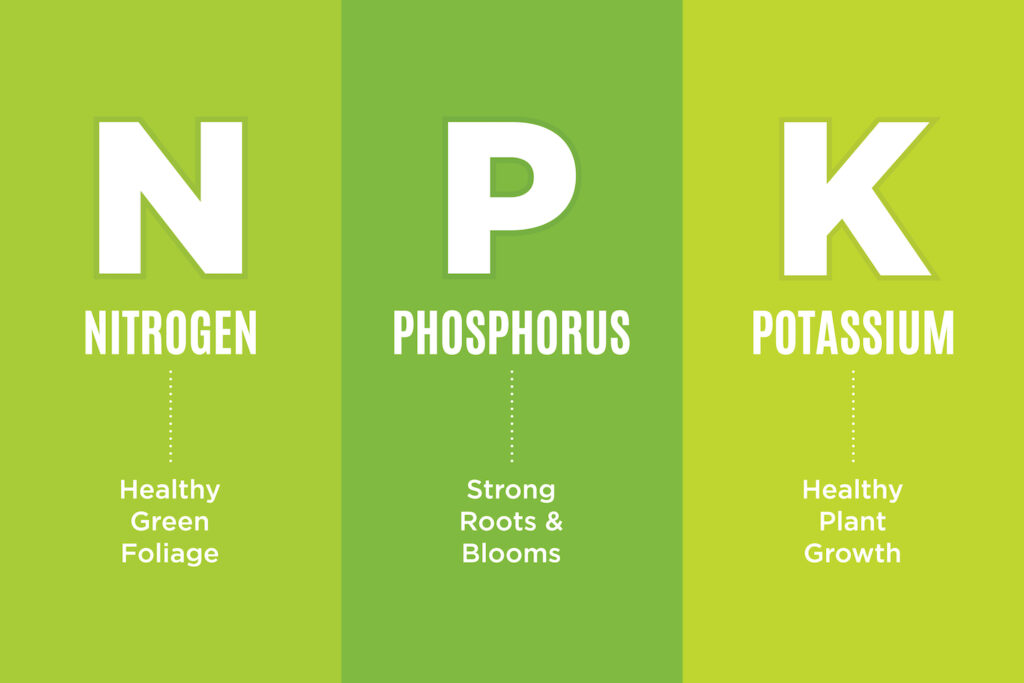Log in or create new account to save this product to your wishlist.
How to Fertilise Hydrangeas: A Complete Guide
Hydrangeas provide massive bursts of beautiful multicoloured blooms. Find out how to care for them for the best results every single year.
Latest articles
7 MIN 22 Jul How to keep your lawn in shape this summer 9 MIN 15 Jul Watering Your Garden: 10 Top Tips! 11 MIN 15 Jul Is Your Grass Type Right for your Garden? 11 MIN 10 Sep Create Your Low-Maintenance Garden – Tips and Ideas 11 MIN 08 Sep The Ultimate Guide to Choosing the Perfect Hedges for Your Garden 12 MIN 30 Aug The Top 20 Evergreen Climbers to Transform Your GardenIf you’ve ever admired a beautiful garden filled with lush, vibrant hydrangeas, you may have wondered how to achieve such impressive blooms for yourself. And we have the secret to these magnificent flowering shrubs: proper fertilisation.
- Understanding the nutritional needs of hydrangeas
- When to fertilise hydrangeas for maximum impact
- How to change the colour of bigleaf hydrangeas
- Choosing the right fertiliser for your hydrangeas
- Expert tips on how to fertilise hydrangeas effectively
- Common mistakes to avoid when fertilising hydrangeas
- Additional care tips for lush, blooming hydrangeas
- FAQs
- Unlocking the secrets of beautiful hydrangeas
Fertilising is an essential part of caring for hydrangea plants, ensuring they receive the nutrients they need to produce those stunning blossoms we all adore.
In this article, I’ll discuss how to fertilise hydrangeas for maximum impact, from understanding their nutritional needs to expert tips and common mistakes to avoid.
So, let’s dive in and unlock the secret to beautiful hydrangeas!
Understanding the nutritional needs of hydrangeas

Before we delve into how to fertilise hydrangeas, it’s crucial to understand their nutritional needs.
Like all living things, hydrangeas require specific nutrients to thrive, including nitrogen (N), phosphorus (P), and potassium (K).
- Nitrogen promotes healthy foliage growth.
- Phosphorus encourages root development and flowering.
- Potassium plays a vital role in the plant’s overall health, contributing to disease resistance and water regulation.
Hydrangeas also benefit from secondary nutrients and micronutrients such as calcium, magnesium, iron, and manganese. And while these nutrients are naturally present within your garden soil, they often require topping up through fertilisers to ensure your plants receive adequate amounts.
So, understanding the nutritional needs of your hydrangeas is the first step to beautiful blooms.
When to fertilise hydrangeas for maximum impact
Timing is crucial when it comes to fertilising your hydrangeas.
For maximum impact, fertilise your plants in early spring, just as they wake up from their winter dormancy. This will provide the nutrients needed for new growth, encouraging a healthy root system.
And you can boost the plant’s overall health with a second fertiliser application in late spring or early summer.
Avoid fertilising hydrangeas in late summer or fall, which will promote new growth that may not have time to harden off before winter, leaving the plant vulnerable to cold damage.
How to change the colour of bigleaf hydrangeas

One of the most fascinating aspects of bigleaf hydrangeas (Hydrangea macrophylla) is their ability to change colour based on soil conditions.
The flower colour of these hydrangeas is influenced by the soil’s pH level and the availability of aluminium.
How to encourage blue hydrangea blooms
Acidic soils (pH below 6) with plenty of aluminium will produce blue flowers. You can lower the soil’s pH for blue flowers by adding aluminium sulfate or sulfur.
Wait until the plant shows signs of fresh spring growth. Then, mix 7g aluminium sulfate in 4.5 litres of water, and soak the surrounding soil.
How to produce pink hydrangea blooms
You need to remove the aluminium from the soil for pink blooms, raising the pH and making the earth more alkaline.
Decrease the aluminium availability in the soil by applying garden lime made from ground limestone. Again, the earlier in spring you do this, the better.
For best results, grow in a pot
Keep in mind that changing the soil’s pH can take time, and it’s essential to monitor the pH levels to avoid overcorrecting.
Lawn doctor Louis says:
If you’re determined to dictate the colour of your blooms, I recommend growing the plant in a container, making it easier to control the soil’s pH.
Choosing the right fertiliser for your hydrangeas

A slow-release, granular fertiliser with an N-P-K ratio of 10-10-10 is ideal for most hydrangeas. This will provide a balanced supply of nitrogen, phosphorus, and potassium to support healthy growth and flowering.
When trying to change the colour of bigleaf hydrangeas, choose an acidifying fertiliser for blue blooms or an alkaline fertiliser for pink flowers. These specialised fertilisers provide essential nutrients and help adjust the soil’s pH to encourage the desired colour change.
Always follow the manufacturer’s instructions for application rates and frequency.
Expert tips on how to fertilise hydrangeas effectively

To fertilise hydrangeas effectively, follow these expert tips:
- Apply the fertiliser evenly around the plant’s drip line, avoiding contact with the trunk or stems.
- Water the fertiliser into the soil thoroughly to help it penetrate the topsoil and reach the plant’s roots.
- Monitor your hydrangeas’ health, and adjust the fertiliser application as needed. Yellowing leaves can indicate a nutrient deficiency, while excessive growth may signal over-fertilisation.
- Test your soil’s pH and nutrient levels periodically to ensure your hydrangeas are receiving the proper balance of nutrients.
Common mistakes to avoid when fertilising hydrangeas
When fertilising hydrangeas, avoid these common mistakes:
- Over-fertilising: Applying too much fertiliser can lead to excessive growth, weak stems, and fewer blooms. Follow the manufacturer’s recommended application rates and adjust as needed based on your plants’ health.
- Fertilising at the wrong time: Fertilising too late in the season can promote tender growth that is susceptible to cold damage. Stick to early spring and late spring or early summer applications for the best results.
- Not “watering in” the fertiliser: Failing to water the fertiliser into the soil can result in a waste of nutrients and potential harm to the plant. Always water in fertilisers thoroughly to ensure they reach the hydrangeas’ roots.
Lawn doctor Louis says:
Use a hand spreader to apply granulated fertiliser. It’s the best way to ensure even distribution!

- For even distribution of fertiliser or seeds
- Easy to use and clean
- Helps avoid over-fertilising
Additional care tips for lush, blooming hydrangeas
In addition to proper fertilisation, other care practices can help ensure your hydrangeas are healthy and produce stunning blooms:
- Prune your hydrangeas at the appropriate time based on their species. Some hydrangeas bloom on old wood. On the other hand, others flower on new growth. Pruning at the wrong time can lead to a lack of blooms for the season.
- Provide consistent moisture, especially during dry spells or hot weather. Hydrangeas prefer moist, well-draining soil and may wilt or suffer from reduced blooming if left too dry.
- Choose a planting location with enough sunlight for your hydrangea variety. Some hydrangeas prefer full sun, while others thrive in partial shade.
FAQs
Hydrangeas require a balanced amount of nitrogen (N), phosphorus (P), and potassium (K). So, look for a fertiliser with an NPK ratio of 10-10-10 or other balanced proportions. Add extra aluminium sulphate for blue blooms or garden lime for pink flowers.
While coffee grounds can help acidify the soil and provide some nutrients, they should not be relied upon as a primary fertiliser for hydrangeas. It’s best to use a balanced, slow-release fertiliser designed for hydrangeas to ensure they receive the necessary nutrients for healthy growth and flowering.
Fertilise your hydrangeas twice a year: once in early spring and again in late spring or early summer. This will provide nutrients for new growth, root development, and flowering.
Unlocking the secrets of beautiful hydrangeas
With the proper knowledge and care, you can unlock the secret to lush, blooming hydrangeas.
Choose the right fertiliser and apply it at the right time for your particular hydrangea variety to ensure they receive the nutrients they need to thrive.
And if you have any questions about growing beautiful hydrangeas, don’t hesitate to get in touch!
Thanks for reading.
Leave a comment
Your answer will be displayed on the site and the interested party will be notified by email.
Leave a comment
Have a question or want to share your experience? Leave us a comment.
Read more
The best tips and tricks for a lush green lawn
 7 MIN
13 Sep
Lavender Cuttings: a step-by-step guide
7 MIN
13 Sep
Lavender Cuttings: a step-by-step guide
 11 MIN
10 Sep
Create Your Low-Maintenance Garden – Tips and Ideas
11 MIN
10 Sep
Create Your Low-Maintenance Garden – Tips and Ideas
 Scarifying Kit
All products after scarifying | Quickly restores the lawn after scarifying | Outsmart weeds quickly with the use of this kit
From: € 39.99
Scarifying Kit
All products after scarifying | Quickly restores the lawn after scarifying | Outsmart weeds quickly with the use of this kit
From: € 39.99
 Spring Lawn Care Kit
MOOWY’s choice for the spring | Quick recovery of your lawn after winter | A strong lawn prevents weeds
From: € 25.99
Spring Lawn Care Kit
MOOWY’s choice for the spring | Quick recovery of your lawn after winter | A strong lawn prevents weeds
From: € 25.99
 Long Lasting Lawn Fertiliser
Effective for 90 days | See results in 14 days! | Suitable for all types of grass and soil
From: € 13.99
Long Lasting Lawn Fertiliser
Effective for 90 days | See results in 14 days! | Suitable for all types of grass and soil
From: € 13.99
Do you want a lawn calendar?
🌱 All important maintenance moments for your lawn during the year. Leave your email and we will send you the lawn calendar for free.
Enter your email
Receive the lawn calendar in the mail
Enjoy a green lawn all year round!










Comments (0)
There are no comments yet. Well then, what are you waiting for to
Be the first to write your comment!inaugurate this pretty page?
Do you have some comments?